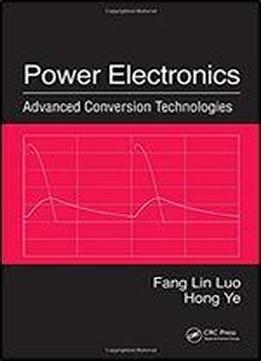
Power Electronics: Advanced Conversion Technologies
by Fang Lin Luo /
2010 / English / PDF
11.4 MB Download
The ever-growing shortage of energy resources continues to make the development of renewable energy sources, energy-saving techniques, and power supply quality an increasingly critical issue. To meet the need to develop renewable and energy-saving power sources, green energy source systems require large numbers of converters. New converters, such as the Vienna rectifier and z-source inverters, are designed to improve the power factor and increase power efficiency. Power Electronics: Advanced Conversion Technologies gives those working in power electronics useful and concise information regarding advanced converters. Offering methods for determining accurate solutions in the design of converters for industrial applications, this book details more than 200 topologies concerning advanced converters that the authors themselves have developed. The text analyzes new converter circuits that have not been widely examined, and it covers the rapid advances in the field, presenting ways to solve and correct the historical problems associated with them. The technology of DC/DC conversion is making rapid progress. It is estimated that more than 600 topologies of DC/DC converters exist, and new ones are being created every year. The authors completed the mammoth task of systematically sorting and categorizing the DC/DC converters into six groups and have made major contributions to voltage-lift and super-lift techniques. Detailing the authors’ work, this book investigates topics including traditional AC/DC diode rectifiers controlled AC/DC rectifiers power factor correction unity power factor techniques pulse-width-modulated DC/AC inverters multilevel DC/AC inverters traditional and improved AC/AC converters converters used in renewable energy source systems With many examples and homework problems to help the reader thoroughly understand design and application of power electronics, this volume can be used both as a textbook for university students studying power electronics and a reference book for practicing engineers.











